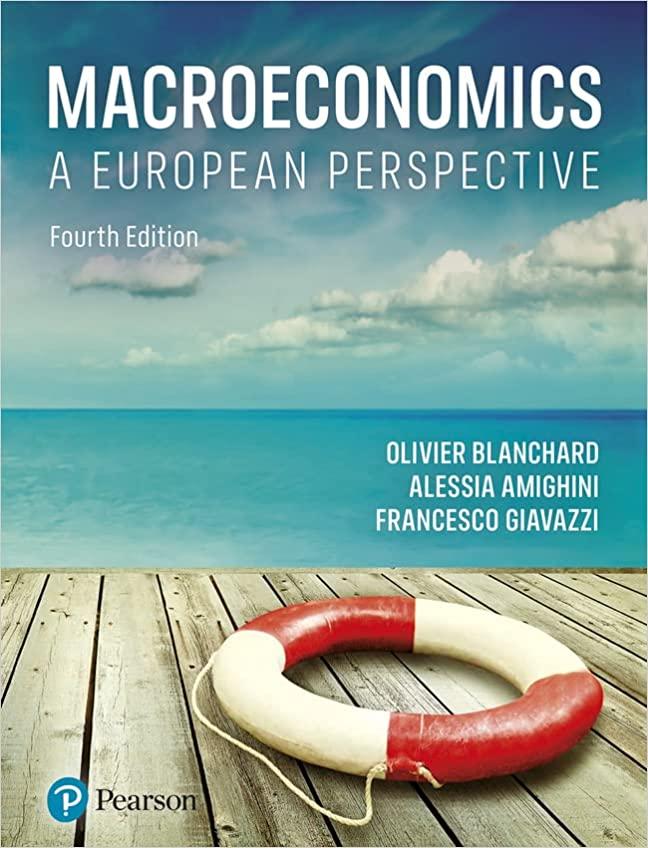Question
Consider Research tasks below 1. (20 points) Load and explore the main variables. (a) (7 points) You are given a dataset in the .dta format.




Consider Research tasks below
1. (20 points) Load and explore the main variables.
(a) (7 points) You are given a dataset in the .dta format. Figure out how to load this dataset in R. Provide your R-commands to load the data. In particular, be clear about which R-package you install and use. (Hint: use the Internet.)
(b) (13 points) Obtain summary statistics and histograms for the variables wage and educ. For the histograms, give informative titles and variable names instead of just using the default titles and variable names. For example, you could use Years of Education in place of educ. Discuss the data characteristics. 1
2. Estimate the linear regression ln(wagei ) = ?1 + ?2educi + ei . where ei is the error and ?1 and ?2 are the unknown population coefficients.
(a) Report the estimation results in a common form as introduced in the lecture note 3. For example, see page 9 of the note 3, where the estimates are presented in an equation form, along with standard errors and some measures for model fit.
(b)Construct a scatter diagram of educ and ln(wage) and plot the estimated regression equation in (a) on the scatter diagram. Give informative title and labels for the variables, e.g., do not use the default title and labels.
(c) Assuming that E[e|educ] = 0, interpret the estimated coefficient on educ (2 points) and test whether or not the population coefficient is zero at the 1 % significance level (2 points).
(d) You suspect that the hourly wage could depend on working hours per week. Discuss under what condition(s) the estimated coefficients in (a) would be biased due to the omission of the weekly working hours (2 points). Give a reasonable and intuitive story on why omission of the weekly working hours would cause omitted variable bias in the regression in (a) (2 points). Under your story, explain whether the estimated coefficient on educ in (a) would be overestimated or underestimated (2 points). See pages 4 and 5 of Lecture note 4.
(e) The variable hrswk is the average weekly working hours for each individual in the data. Regress ln(wage) on educ and hrswk. Discuss the estimation results. In particular, how would you revise your answer in (c)? Are the estimates are statistically significant? 2
3. You are concerned about omitted variable bias in the regressions of Question 1. For that reason, you decide to regress ln(wage) on all other variables in the dataset and use this model as a benchmark.
(a) Report a 95% confidence interval for the estimated slope parameter of educ (3 points), explain the relationship between the confidence interval and hypothesis testing (4 points), and test the hypothesis that one year of additional education would increase hourly wage by 12% (4 points).
(b) Assuming there is no omitted variable bias, discuss the estimated coefficient on female in the benchmark model. In particular, explain what the estimated coefficient on female means on hourly wage (3 points), compare the effect of being female and the effect of one year of additional education (2 points), and discuss whether it is statistically significant or not (2 points).
(c) Using the estimation results of the benchmark model, test the hypothesis that the hourly wage is not affected by the geographic location. Explain how you reach your conclusion. (Hint: use package car.)
(d) Using the estimation results of the benchmark model, test the hypothesis that the wage differential associated with African American is equal to the wage differential associated with Asian American. Explain how you reach your conclusion. (Hint: use package car.)
(e) How would you modify the benchmark model to estimate the effects on hourly wage of one additional year of education separately for each gender (4 points). How do the effects of education differ between the genders and is the difference statistically significant? (3 points) (f) Keoka is an African American woman, working in a metropolitan area. After she obtained her high school diploma, she got a job and started working instead of getting a higher education. Now she has a five-year of experience in the industry and is working full time (40 hours a week). Using the benchmark model, predict her hourly wage. Be careful: the left-hand side variable is ln(wage), but you should predict Keoka's wage.
4. It may be more useful to estimate the effect on earnings of education by using the highest diploma/degree rather than years of schooling. Define four dummy variables to indicate educational achievements; ? lt hs = 1 if educ
(a) (6 points) Create the dummy variables (lt hs, hs, col, some col) as defined above (3 points) and compute the sample means of hourly wage for each of the four education categories (3 points).
(b) (9 points) Regress wage on the four dummies (lt hs, hs, col, some col). You will face a problem. What is the problem here? Under what circumstances would you face the problem (4 points). To avoid it, you now regress wage on three dummies (lt hs, col, some col) excluding hs. Interpret the estimated coefficients and compare the estimation results with the findings in (a)




Step by Step Solution
There are 3 Steps involved in it
Step: 1

Get Instant Access to Expert-Tailored Solutions
See step-by-step solutions with expert insights and AI powered tools for academic success
Step: 2

Step: 3

Ace Your Homework with AI
Get the answers you need in no time with our AI-driven, step-by-step assistance
Get Started


